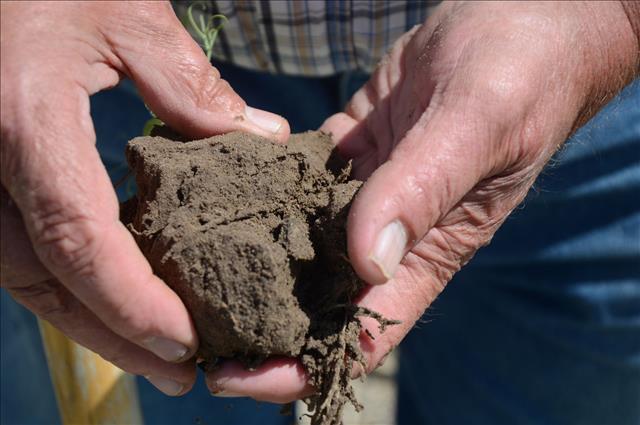
In the last few columns, we've talked about the definition of a resilient ag landscape, and how we measure incremental improvements in building an ag landscape that's better able to handle extreme weather events.
It's no secret that soil, the lifeblood of production agriculture, is one of, if not the biggest component in a resilient ag landscapes, especially considering the long-term effect of soil on the resiliency of ag land. USDA's Natural Resources Conservation Service uses the term "soil health" or "soil quality" to define "the continued capacity of soil to function as a vital living ecosystem that sustains plants, animals and humans."
But what does soil health mean to the producer? There are different perspectives on just how to define soil health, or whether it should be called soil health.
"It is very difficult to define. What's even more difficult is the parameters to measure; most parameters are based on physical characteristics and chemical characteristics, not on health characteristics," says Paul Jasa, University of Nebraska Extension engineer. "I look at soil health as a result of not tilling the soil and building good structure, aggregates, good porosity and air exchange in the soil. Those are all things we can measure. Once we achieve that, the soil biology can thrive and expand."
Jasa notes one indicator of healthy soil is the abundance of soil biology, including microbes, earthworms and anything else crawling beneath the surface. "A good healthy soil will usually have very little residue on top, because there's biological activity digesting it," he says. "If the residue is disappearing when the next crop is growing, that's an indicator that the soil health is working for you and biology is working for you."
That's one way to tell the soil biology is alive and well at present, but one of the biggest challenges is gauging improvements or degradation of the soil over the long term. "That's one of the sad things; we have degraded our resource so slowly, a lot of people don't notice," notes Jasa. The same is true for soil improvements. In a society that demands instant gratification, it can be a tough sell to convince producers to change their management practices to improve soil biology.
Meanwhile, the yield loss that results from this degradation is often mitigated through use of technology. That's where soil loss tolerance comes in. Also known as the T value, it's what's considered the "tolerable" amount of soil loss, or the amount of soil that can be lost and not give up yield. Because, as Jasa puts it, technology can make up for it.
"We call it the D−. It's not a failing grade, but it's sure not an A. I'd rather have an A, where I'm recovering the soil, recovering what I've lost over time," Jasa says.
When it comes to nomenclature, Charles Wortmann prefers neither "soil health" nor "soil quality." "Both are loaded with ambiguity, and there's no reason to be so ambiguous," says Wortmann, a UNL agronomy professor. Instead, he prefers the term soil productivity. "Because generally, we're after productivity," he says. "In ag settings, we're most concerned about productivity and sustainable productivity."
Productivity refers to yield — something producers are already adept at measuring. However, Wortmann notes productivity doesn't always measure everything.
"For example, we do have loess soils that have suffered a lot of erosion, but producers do get a lot of productivity off of them," he adds. "So we do have to look beyond productivity as well."
Productivity can be improved by increasing soil organic matter (SOM), which directly relates to water-holding capacity, infiltration, nutrient cycling, cation exchange capacity (CEC) and microbial activity. Because crop residue or biomass is a determinant of soil organic matter and microbial activity, higher yields should be a determining factor as well, along with no-tilling, cover-cropping, adding a small grain to the rotation, planting perennial grasses, and using other practices that add biomass to the soil, Wortmann says.
The question is, how much more improvement is needed? It depends on the soil organic matter steady state for that production environment, that is the level where carbon added equals carbon lost for the soil, Wortmann says. This is a fairly new concept, however, and the steady state varies with soil, climate and management. An indicator of the soil organic matter steady state is the norm for soil organic matter for similar, but uneroded, soils in the vicinity and under similar management. The best returns to investment to increase soil organic matter, Wortmann says, is on soils where the soil organic matter is well below the steady state. Little sustained increase can be expected if soil organic matter is already above the steady state unless the production environment is substantially changed.
However you define healthy or productive soil, take a drive across the Nebraska countryside, and it's obvious there are soils with room for improvement. In upcoming articles for Resilient Ag Landscapes, read about some of the management practices that can be used to improve biological activity and organic matter in different Nebraska production environments.
About the Author(s)
You May Also Like






